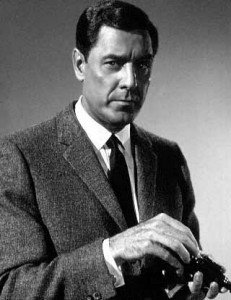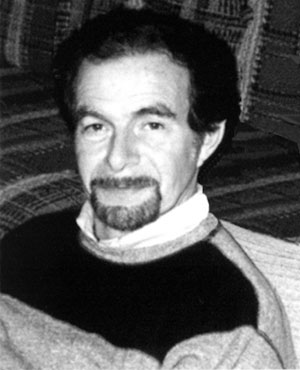If all goes according to schedule, the day before this piece posts we will have flown back to Washington, D.C. from the Caribbean, where we will have spent two days in St. Maarten and then one week aboard Sagitta, a tall ship run by some long time friends of ours at
Island Windjammers. So, while I am not one to plan far ahead with my SleuthSayers articles foresight is nevertheless called for here.
I’m also not usually inclined to “re-gift” past columns, but I am going to make an exception there, also.
Today, January 15, is the day after my younger brother Graham’s 60th birthday. Attaining that age can be a rather shocking experience (although we should continue to remind ourselves that these “big” years are dictated only by the number of fingers we have on two hands.) In wishing Graham a happy 60th I thought I would resurrect an article I did for Criminal Briefs celebrating, among other things, the birthday of Manfred B. Lee, one half of the team that gave us Ellery Queen. As my friend Mike Nevins (who’s new retrospective on Lee and Dannay,
Ellery Queen: The Art of Detection, will be the subject of a column here in a couple weeks) has often observed, Lee can easily become the forgotten member of the Ellery Queen team because he had the unfortunate luck to die early.
So, for Lee, for his birthday, for birthdays in general, for the somber air that often accompanies birthdays that are divisible by ten, and for my brother Graham, I resurrect the following article, which posted on Criminal Briefs just over four years ago, under the title:
January 11, 2009 – A Birthday Essay
This year [
i.e., 2009 when the article was written], as in many previous years, over the holiday season I re-read Ellery Queen’s
The Finishing Stroke. As those of you who have read the novel already know, while
The Finishing Stroke was written in 1957, the narrative is presented in three books and spans three different periods. The story principally takes place in “Book Two,” over the Christmas and New Year’s holiday in 1929, but it begins with “Book One,” set in 1905, and ends with “Book Three,” set in 1957. The three books comprising the story therefore span much of the lives of Manfred B. Lee and Frederic Dannay, who created Ellery Queen.
Like many Queen novels,
The Finishing Stroke is best read on many levels. There are clues that have to do with the mystery at hand, but there are also clues that have to do with other things altogether. Expanding on this premise, it is a good rule of thumb in a Queen novel for the reader never to let a referenced date slide by without pausing to ponder whether the date has a hidden significance. A good example of this appears in the early pages of Book One of
The Finishing Stroke, where we learn that the father of a central character died 104 years ago on this very date – January 11, 1905.
Doing the Numbers
While an idle reader might brush past this, there is a significance to the date – on January 11, 1905, Manfred B. Lee, one half of the Ellery Queen writing team, was born. The other half of the Queen partnership, Frederic Dannay, was also born in 1905, but in the month of October. While Dannay remains, perhaps, the better known of the pair, it is Lee, the writer half of the collaboration, who I celebrate today, on what would have been his 104th birthday.
Although Queen returned with a final series of books in the 1960s, it is common knowledge that
The Finishing Stroke, the thirtieth Queen tome, originally was intended by Lee and Dannay to be the final Ellery Queen mystery. As such, it is a particularly interesting work, which can be read as a culmination of the series, at least as of 1957. The book spans the life of Ellery as well as his creators, and is, in many respects, a retrospective of Ellery Queen both as detective and as writer.
As noted,
The Finishing Stroke opens in 1905, the year that Lee and Dannay were born, but its narrative focuses on the year in which the first Queen novel,
The Roman Hat Mystery was published. However this writing is hardly early Queen. Rather,
The Finishing Stroke evidences a tight approach honed over many years, and in fact pokes fun at the early somewhat foppish Ellery and at the early more pompous Queen narrative style. This evidences a good deal of self awareness and self-deprecation on the part of both Lee and Dannay. While
The Roman Hat Mystery may have opened the series with a flourish by winning a prize, it is the earliest of the Queen novels, and as such it simply can’t hold a candle to
The Finishing Stroke and other late Queen works. It has been said that an author must either move forward or backward – staying the course is not an option. Ellery Queen’s novels got better and better as the series progressed.
Prior Significance
In order to understand and appreciate the evolution of Ellery Queen’s writing, a little bit of detective work is required of us. We know the basics of how the Queen collaboration worked and evolved. We know, for example, that Dannay, in many respects, was the more public face of the Ellery Queen partnership. He performed the editorial tasks at
Ellery Queen Mystery Magazine and, we are told, more readily assumed the role of public persona. But while Dannay crafted the intricate outlines for the Ellery Queen novels and stories, we also know that it was Manfred B. Lee who in fact provided the written words, who crafted the Queen novels and stories, and whose writing skills continued to evolve over the decades.
Mike Nevins observed at the Ellery Queen Centenary hosted by EQMM in 2005 that Dannay’s more outgoing nature – together with the unfortunate fact that Lee died early, in 1971, while Dannay lived on until 1982 – may have lessened the world’s perception of Lee’s importance to the partnership. But the simple fact remains that when Lee, who began his life on this date in 1905, died of a heart attack on the dressing room floor of his Roxbury, Connecticut home on April 3, 1971, Queen also died. After Lee’s death, there would be no more words.
Writing
What do we know of Manfred Lee’s approach to wordsmithing? Rand Lee, in his essay “The Temple of his Words: Growing up with Ellery Queen,” which comprises one chapter of the Queen centenary volume
The Tragedy of Errors, offers an invaluable insight into his father’s approach. Rand lists Lee’s “rules for budding authors” as follows:
1. Read everything you can lay your hands on.
2. Write what you know.
3. Edit ruthlessly.
4. Don’t bother with writing courses. You learn to write by writing.
Rand also expands on rule (3). “The editing advice Dad gave me was explicit, and I still try to follow it, however imperfectly: When you finish your first draft of a story, go back and cross out every adjective and adverb. Then put in only those adjectives and adverbs you feel you really need.”
Lee’s writing, by his own admission, continued to evolve and mature. Rand writes that in his father’s view, the Queen novel
Halfway House “marked the transition from his and [Dannay’s] youthful excesses to their first hint of writing maturity.” Rand also notes that his father, with some embarrassment, tried to dissuade his then-young son from reading the early Queen works, remarking that they were not all that good. This, again, is reflective of the fact that Ellery Queen’s writing never stood still – it always evolved. As a Queen fan, it is for me the second half of the Queen library – the books following the aptly-named
Halfway House – that are the gems of the series. The writing is spare, the plotting is ingenious, and the cluing is scrupulously fair.
Collaboration
Collaboration is always a difficult task, and by all accounts the Ellery Queen partnership was a contentious one. Had the partnership been a marriage, it would have been a rocky, yet enduring marriage. Lee was said to have resented the fact that his role, as the writer in the partnership, was to breathe life into the more convoluted Queen plots concocted by Dannay. The bickering between the two cousins became famous. Rand recalls in his essay that the two “had fallen into the routine of working long-distance between Connecticut and Larchmont, New York. And frequently I would pick up the extension phone to hear them arguing with one another.”
At the Queen Centenary Symposium, Mike Nevins regaled the audience by reading the angry letters sent back and forth between the two cousins as they battled their way through drafts of various Queen novels. Jon L. Breen, in his essay “Ellery Queen,” also comprising a chapter of
The Tragedy of Errors, similarly observes that a “casual reader of their correspondence would marvel that they managed to work as a team for over forty years, and might even conclude the two cousins hated each other.”
Despite this, what is obvious to the fans of the series is that the cousins needed each other, and that but for the collaboration, however contentious, there could have been no Ellery Queen. Tellingly, when Frederic Dannay’s papers were exhibited at Columbia University’s Butler Library in 2005 to mark the Queen centenary, they contained a legal agreement, signed by Dannay and Lee, committing each of the cousins, on threat of damages, never to leave the partnership.
Amazingly, through all their bickering, the Ellery Queen collaboration not only hit its stride early, it also continued to produce and improve for over forty years. Doubtless this success was anchored on the fact that each cousin found in the other that which he himself lacked. Rand writes that “by his own admission”, Lee “could not plot to save his life.” But, as a master of the written word, he excelled. And as already noted, when Lee was gone, so, too, was Queen: without him the writing stopped.
This is not to say the process of writing was easy for Lee. We are told that he brooded over the fact that he wrote only mysteries, and (again, according to Rand) hoped that he could “elevate the mystery genre to the ranks of serious literature.” By all reports he battled recurring and, at times prolonged, bouts of writer’s block. But even when some later Queen novels were completed with the help of ghost writers, Lee’s hand is still apparent and integral to the crafting and editing process, and before his untimely death he returned as the writer of the final Queen volumes.
It was perhaps because of all of this that
The Finishing Stroke was to have been the final Ellery Queen mystery. Rand and others have written of how Lee wished that he could achieve success on his own and in a different genre. While this never happened, the evolution of Lee’s writing throughout the Queen series, including the volumes that eventually followed
The Finishing Stroke, instead raised the mystery writing bar within the genre. Rand reminisces that “[i]n Kabbalah, God creates with Word. Words were worlds to my father.” The worlds he created he left to us in the Queen novels.
But as I noted at the outset of this piece, Ellery Queen novels are often also about numbers. Numbers, and dates, are used cleverly to set up surprise endings, or to hint at an unsuspecting order that may lie just below the surface of perception. The significance of numbers and dates often extends beyond the plots of the books themselves. In keeping with this, it is interesting to note that from the beginning of
The Finishing Stroke until its conclusion 52 years elapse, and from that date in 1957 until today, yet another 52 years have gone by.
Dates and Plums
For my own reasons (which will yet become painfully apparent), over the last few months I watched the days march down toward this particular January 11. Now that the eleventh day of the first month of 2009 has arrived, let us celebrate Manfred B. Lee who was born 104 years ago today and who wrote the Queen novels from Frederic Dannay’s plot outlines. I offer this celebration to Lee, to his writing, and to Ellery Queen on a day that, like the reference to January 11, 1905 in
The Finishing Stroke, has, at least for me, a secondary significance that has little to do with the main theme of this essay but much to do with a secondary theme and with the underlying order of things. There are only a finite number of days in the year, and birthdays therefore are often shared events. Today, for example, is my 60th.
At the beginning of Book Three of
The Finishing Stroke, Ellery tells us “with some alarm he realized that he was getting old.”
* * * * * * *
By way of postscript, and as a testament, once again, to the cyclical nature of time, and to the order in the universe that often defies inclusion within the definition of "random," today, January 15, 2013, it turns out, has become the birthday of our newest niece -- Taytum Grace Connor, born at 8:03 this morning. Welcome! Notwithstanding the foregoing, this is YOUR day!




 by Janice Law
by Janice Law
 The answer to this is kept in suspense and many of the episodes are constructed as investigations, as Carrie Mathison attempts to prove her suspicion that Brodie has been 'turned' during captivity. Even when it is clear that Brodie is not what he seems, his complex character and his mix of restraint and violence prevent any easy answers.
The answer to this is kept in suspense and many of the episodes are constructed as investigations, as Carrie Mathison attempts to prove her suspicion that Brodie has been 'turned' during captivity. Even when it is clear that Brodie is not what he seems, his complex character and his mix of restraint and violence prevent any easy answers.




























